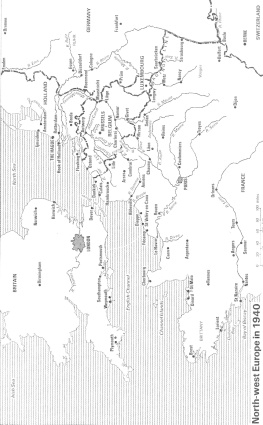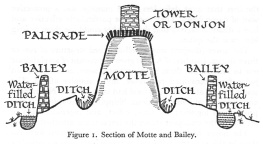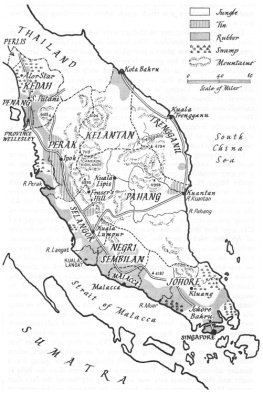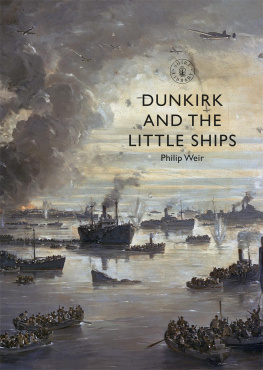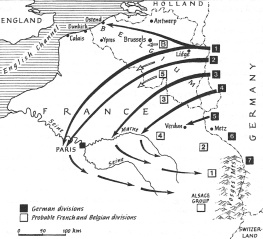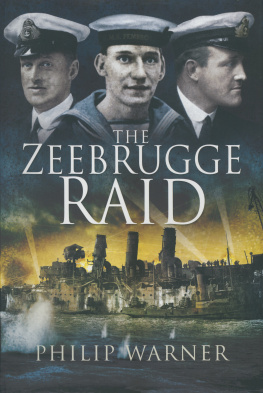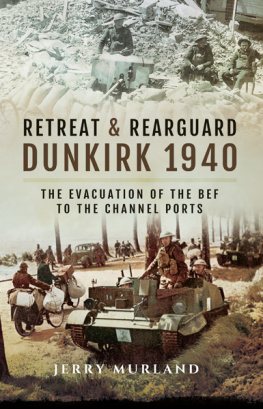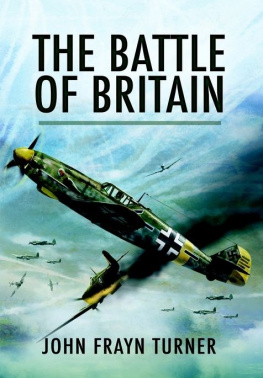The Battle of France, 1940 by Philip Warner
SIX WEEKS WHICH CHANGED THE WORLD
Index of Contents
Acknowledgements
Chronology
Part I: The Preliminaries
Chapter 1 The Seeds of Destruction
Chapter 2 Decade of Illusion
Chapter 3 The Armour of War
Chapter 4 The Surprise That Should Never Have Been
Part II: The Action
Chapter 5 Prelude to the French Invasion
Chapter 6 The Masterstroke
Chapter 7 Rumour and Reality
Chapter 8 Battle in the Skies
Chapter 9 Emergence of a Leader
Chapter 10 Pawns Against the Panzers
Chapter 11 View from the Battlefield
Chapter 12 The Sweep to the Channel Ports
Chapter 13 Halt Before Dunkirk
Chapter 14 The Battles for Calais and Boulogne
Chapter 15 Evacuation at Dunkirk
Chapter 16 Rearguard Action
Chapter 17 View from the War Room
Chapter 18 Personal Initiatives
Chapter 19 The Forgotten Evacuations
Chapter 20 The Final Moves
Part III: The Results
Chapter 21 Hindsight
Chapter 22 The Invasion Which Might Have Been
Chapter 23 After the Fall
Appendix: Forces Involved in the Battle of France
Select Bibliography
Picture Gallery
Philip Warner A Short Biography
Philip Warner A Concise Bibliography
Acknowledgements
Many individuals and establishments have given me generous help in producing this book. The staff of the library at the Royal Military Academy, Sandhurst, have been exceptionally painstaking in tracing sources of information. The Imperial War Museum, as always, has been a tower of strength and provided invaluable advice and documents. So many other libraries and museums all over the country have been helpful that it is impossible to list them all here. Survivors of the battle, British, French and German, have answered my questions fully and patiently. My special thanks go to Lieutenant Colonel Robin Painter, who took enormous trouble to produce, exactly as I wanted them, the detailed sketches from which the maps were drawn.
I am grateful to the following for permission to quote from works published by them:
Batsford Ltd: Anon, Infantry Officer.
Chatto and Windus Ltd: Captain Sir Basil Bartlett, My First War Harrap Ltd: H. Habe, A Thousand Shall Fall Hodder and Stoughton Ltd: J. Colville, The Fringes of Power Hutchinson & Co. Ltd: C. Gardner, A.A.S.F.
Michael Joseph Ltd: H. Guderian, Panzer Leader Methuen Ltd: Anon, Diary of a Staff Officer.
Every attempt has been made to trace authors or artists who may own copyrights of any of the works quoted or illustrations used. If any copyright has been inadvertently overlooked, will the owner please contact the author?
Chronology
The following chronology may give the impression that the battle of France consisted of a logical sequence of events. In fact it was a period when confusion the well-known fog of war was prevalent at all levels. None of the participants had a clear and accurate idea of what was happening in other areas. This applied both to the Germans and to the Allies, a point brought out in the text.
1939
1 September Germany invades Poland.
2 September Poland appeals to Britain and France to begin military action against Germany.
British ultimatum to Germany issued: Germany does not reply.
3 September Britain and France declare war on Germany.
British Expeditionary Force ordered to France, to be under French command.
6 October End of Polish resistance to German invasion.
1940
10 January A German aircraft, carrying documents and maps for Germanys planned attack on Netherlands and France, makes forced landing in Belgium. Germany therefore changes plans for making main thrust through Belgium to one through Sedan area.
9 April Germany invades Denmark and Norway.
Denmark, which has no armed forces, capitulates.
Norway tries to fight back.
15 April British forces land in Norway.
10 May Germans invade Low Countries.
British advance into hitherto neutral Belgium.
11 May Churchill forms National Government in Britain.
Britain bombs Germany.
Fortress of Eben Emael in Belgium captured by Germans in glider attack.
12 May Guderians 19th Panzer Corps reaches River Meuse.
13 May Germans cross Meuse by Sedan.
14 May Rotterdam falls.
Surrender of Dutch Army.
RAF sustains heavy losses counter-attacking Germans in Sedan bridgehead.
16 May British begin retreating in Belgium to avoid being cut off and trapped by Panzers coming across from Sedan.
Antwerp falls.
Germans penetrate north-west extension of Maginot Line.
17 May Von Kleist orders Guderian to halt his tanks and consolidate bridgehead around Meuse. After argument with von Kleist Guderian allowed to continue his advance for 24 hours. Guderian obtains permission from German GHQ for fuller reconnaissance and advances 55 miles. Panzers cross River Oise but Hitler very worried about vulnerability of German southern flank, exposed to main French Army; he believes French to be much stronger and better led than they are.
18 May Germans reach St Quentin.
Reynaud becomes French Minister of National Defence.
19 May Gamelin, Allied C-in-C, replaced by Weygand. French remain in superior command of Allied troops, including British. However Gort, British C-in-C, reports to British Cabinet that a retreat to Dunkirk may be inevitable.
20 May Amiens falls. Germans reach Abbeville.
21 May British tanks counter-attack at Arras.
22 May Germans begin attack on Boulogne.
24 May Von Rundstedt (with Hitlers agreement) halts Panzer columns outside Dunkirk, which is to be left to Luftwaffe. However this does not affect operations against Calais and Boulogne.
25 May Boulogne falls.
26 May Hitler and von Rundstedt allow Panzers to advance again.
27 May Calais falls.
Evacuation from Dunkirk begins.
28 May Belgium capitulates.
Dunkirk evacuation continues.
29 May Lille, Ostend and Ypres fall.
Dunkirk evacuation continues.
30 May Dunkirk evacuation continues.
31 May Dunkirk evacuation continues.
1 June Dunkirk evacuation continues.
2 June Dunkirk evacuation continues.
3 June Dunkirk evacuation continues.
4 June End of Dunkirk evacuation.
5 June Strong French resistance to Germans south of Peronne and Amiens.
8 June British troops leave Norway.
9 June 51st Highland Division begins its advance towards Le Havre.
10 June Mussolini declares war on Allies.
Germans cross River Seine.
51st Highland Division instructed to divert from Le Havre route and proceed to St-Valery-en-Caux.
12 June Bad weather prevents ships evacuating 51st Highland Division from St-Valery. Still under French command, they are ordered to surrender and do so as there is no hope of evacuation and French have already surrendered.
Paris declared an open (undefended) city.
Lt Gen. Alan Brooke takes command of a small force and given mission of establishing a second BEF in Cherbourg area.
Germans occupy Le Havre.
Brookes force begins its withdrawal.
14 June Paris surrenders.
15 June Reynaud resigns and is replaced by Petain.
Petain asks Germans for an armistice.
22 June France accepts German surrender terms.
25 June Hostilities in France end.
1 July Germans occupy Channel Islands.
3 July British destroy French naval squadron at Mers-el-Kebir, Algeria, to prevent it being captured by Germans
At 5.30 a.m. on 10 May 1940 German soldiers invaded Holland, Belgium and Luxembourg. On 14 May they crossed the River Meuse and drove into the heart of France. On 20 May they reached the Channel and Abbeville. The following day British forces attempted a counter-attack at Arras, but it failed and the British Expeditionary Force fell back to Dunkirk. On 24 May von Rundstedt halted the German Panzer forces outside Dunkirk, for reasons which have been controversial ever since. On 25 May Boulogne fell and on the 27th Calais followed. Next day Belgium surrendered. On 29 May Lille, Ostend and Ypres were over-run by the Germans. Between 27 May and 4 June, 338,000 men were evacuated from Dunkirk.
Next page
